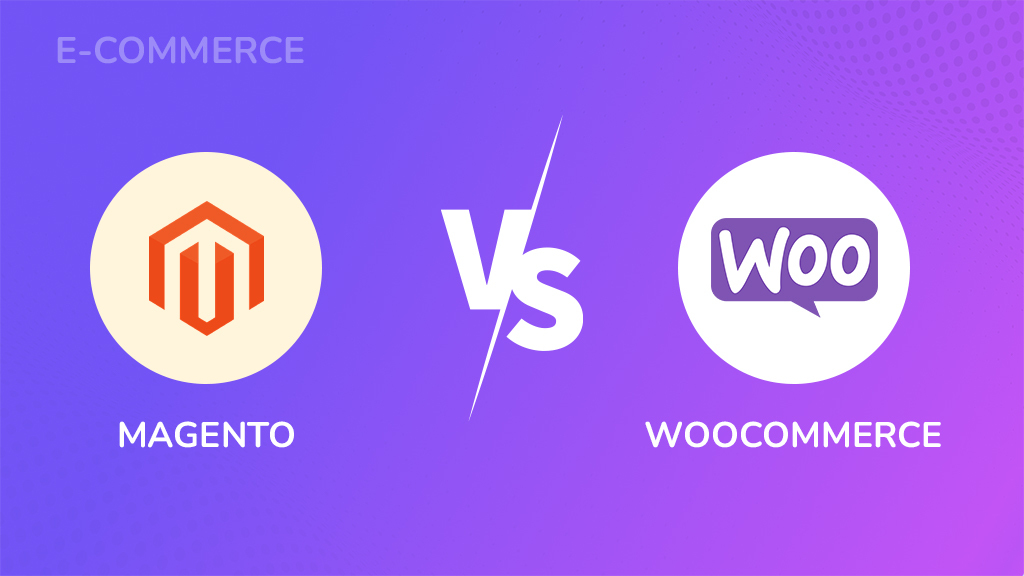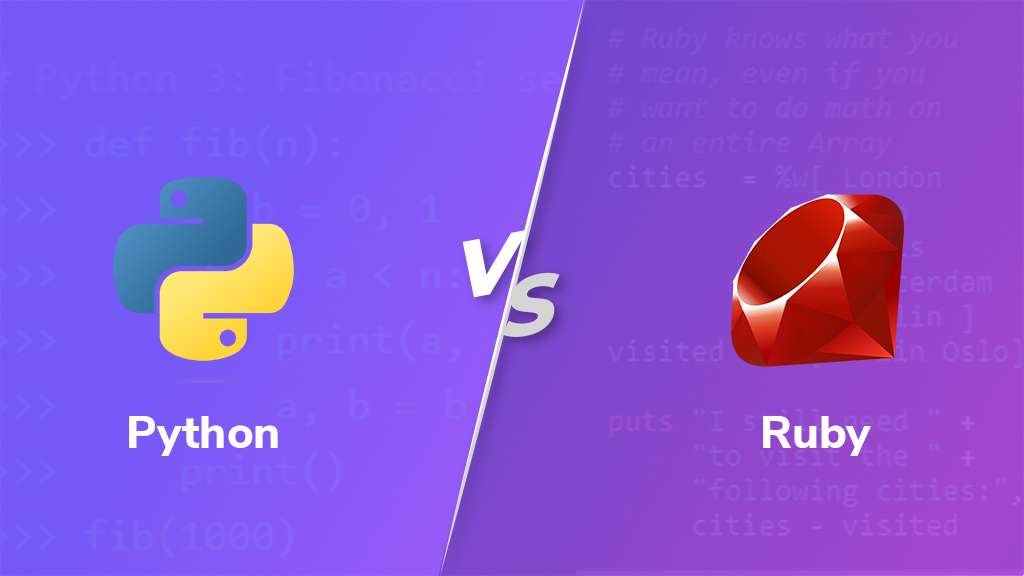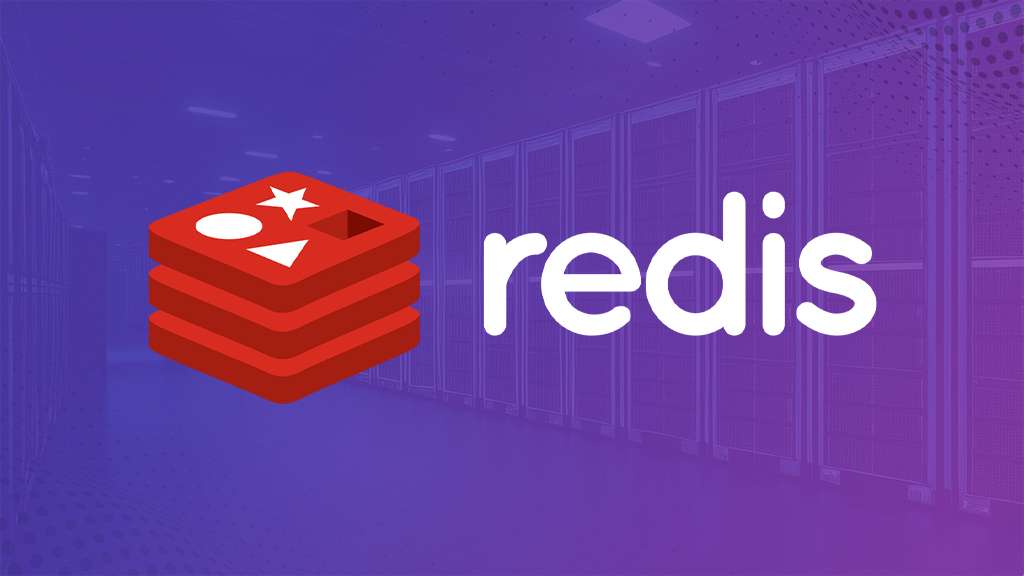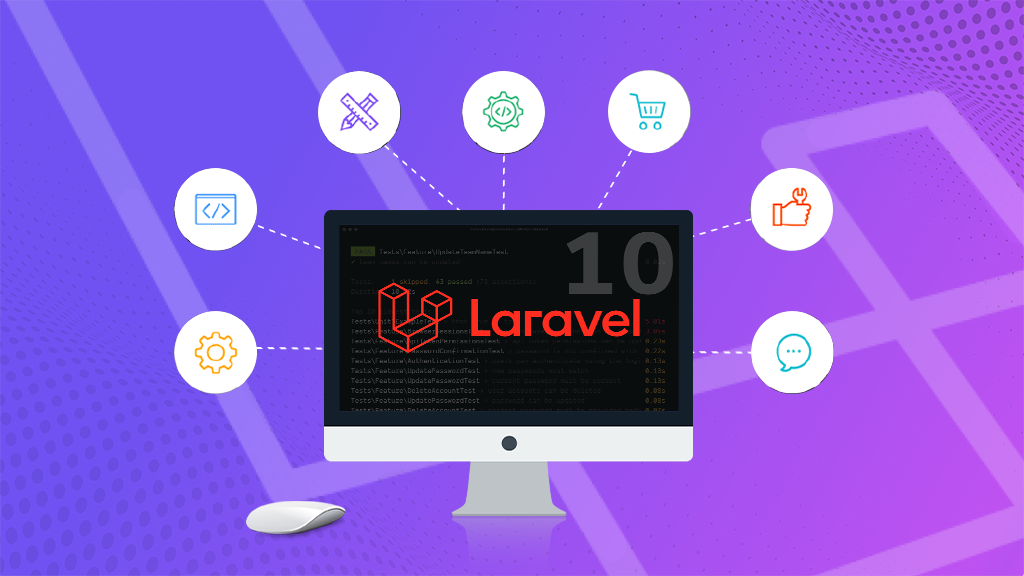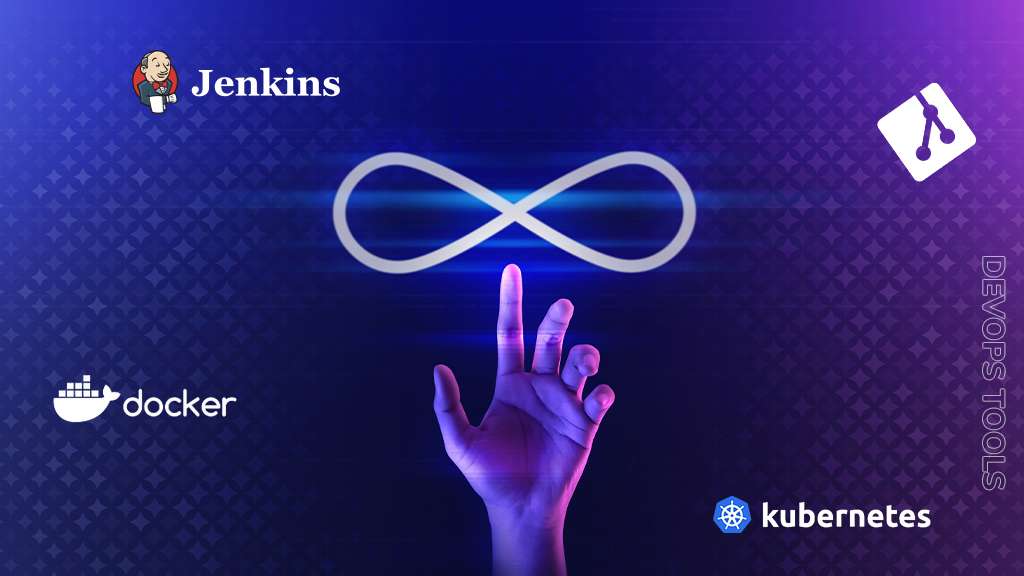
Imagine a massive team of developers and tech experts collaborating to create incredible software. That’s DevOps! Similar to a band, they require the right tools to excel. In 2024, there are numerous impressive tools available to simplify, streamline, and accelerate their work. With such a wide range of options, it can be overwhelming, like choosing a guitar in a vast music store. But don’t worry, we’re here to help! This list serves as a VIP pass to the top 10 DevOps tools for 2024.
Meaning of DevOps
DevOps is a methodology that brings together software development and IT operations teams to streamline the software delivery process. By integrating these traditionally separate functions, DevOps aims to improve the speed, efficiency, and quality of software development and deployment.
In traditional software development approaches, there is often a disconnect between the development team, responsible for creating new features and functionalities, and the operations team, responsible for deploying and maintaining the software in production environments. This siloed approach can lead to delays, miscommunication, and inefficiencies in the software delivery lifecycle.
DevOps seeks to bridge this gap by fostering collaboration and communication between development and operations teams. By breaking down the barriers that exist between these teams, DevOps encourages a shared responsibility for the entire software lifecycle, from development to deployment and beyond.
One of the key principles of DevOps is the automation of processes. By automating tasks such as code testing, deployment, and monitoring, DevOps enables faster and more reliable software delivery. Automation reduces the risk of human error and allows teams to focus on higher-value activities, such as innovation and problem-solving.
Why Should You Use DevOps Tools?
In the fast-paced world of software development, DevOps tools are essential. They are not just fancy gadgets for tech enthusiasts; they are game-changers that can transform your entire development process. But why invest in these tools? Here’s why they will enhance your team’s performance and leave your competitors behind:
1. Lightning Speed
Imagine being able to release new features and bug fixes in no time. DevOps tools automate tedious tasks like testing, deployment, and infrastructure setup, allowing your developers to focus on writing excellent code. Furthermore, say goodbye to late nights and hello to quick delivery cycles that keep your customers satisfied.
2. Superior Quality
Bugs can be a developer’s worst nightmare. However, with DevOps tools, you can catch errors early on through automated testing and continuous feedback loops. These tools not only detect bugs but also identify potential issues before they become problems. This results in reliable and stable software that your users can rely on.
3. Increased Productivity
Tired of wasting time on manual tasks? DevOps tools are efficiency experts, automating repetitive processes and streamlining workflows. This especially frees up valuable time for your team to be more creative, tackle complex challenges, and focus on high-impact projects. Just imagine the possibilities when your team is not burdened by mundane tasks!
4. Foster Collaboration
DevOps is all about breaking down barriers and promoting collaboration between development and operations teams. These tools provide shared platforms and communication channels, encouraging transparency and teamwork. No more blaming or finger-pointing; instead, you have a united front working towards a common goal: delivering exceptional software.
5. Saving Money with DevOps Tools
DevOps tools not only improve efficiency but also help save money. By automating tasks, minimizing errors, and simplifying workflows, you can greatly reduce development costs. Moreover consider it as a long-term investment that frees up resources for other aspects of your business.
Top 10 DevOps Tools
1. Git
Git has become the standard for source code management in software development. It allows individuals and remote teams to collaborate easily and supports open-source contributions. Git functions as a version control system, keeping track of code changes. With Git, developers can navigate the evolution of their work by accessing past versions and integrating specific revisions. They can also experiment with new features by branching their codebase and merging successful additions back into the main branch. While Git’s command-line interface is powerful, graphical user interfaces like GitKraken and GitHub Desktop provide a more intuitive experience. Code editors like Visual Studio Code also offer Git integration for version control management.
i. Version Control Made Easy
No need to worry about losing your progress anymore! Git keeps track of every change you make to your codebase, saving each version as a separate snapshot. This allows you to:
- Go back in time
If you need to revert to a previous version, simply use Git’s user-friendly commands or visual branching interfaces. No more panicking to recover lost work.
- Compare and analyze
Easily trace the evolution of your code. Git lets you compare different versions, line by line, highlighting the exact changes made at each step.
ii. Expanding Possibilities with Branching
Fearlessly experiment and innovate with Git’s powerful branching system:
- Endless exploration
Create separate branches to test new features and bug fixes without risking the stability of your main codebase. Furthermore, think of it as a playground for creative exploration!
- Seamless merging
Once your experimental branch is ready, effortlessly integrate its refined additions back into the main codebase using Git’s intuitive merging tools.
iii. Simplified Collaboration
Distance is no longer a barrier with Git! Its distributed nature enables smooth collaboration:
- Work at your own pace
Team members can work on their copies of the codebase, pushing and pulling changes to stay in sync, no matter where they are.
- Resolve conflicts with ease
Git smartly identifies potential conflicts when merging changes, providing clear guidance to navigate any discrepancies.
2. Jenkins
Jenkins stands out as a viral tool for automating DevOps processes. This open-source CI/CD server enables you to automate various stages of your delivery pipeline. The extensive range of plugins is the key factor behind Jenkins’ widespread adoption. With over 1,800 plugins available, it seamlessly integrates with numerous DevOps tools, such as Docker, Puppet, Octopus Deploy, and more. Jenkins empowers you to establish and tailor your CI/CD pipeline to suit your specific requirements.
Getting started with Jenkins is a breeze, as it is compatible with Windows, Mac OS X, and Linux, and can be easily installed using Docker. The setup and configuration of your Jenkins server can be conveniently done through a user-friendly web interface. Whether you are a first-time user or an experienced one, you have the flexibility to install Jenkins using plugins or create a customized configuration.
Features of Jenkin
i. Powerhouse Plugin
Jenkins is a true powerhouse when it comes to plugins, offering an impressive selection of over 1,800 options. These plugins seamlessly integrate with a wide range of tools, making it a versatile solution for all your DevOps needs. It’s like having a Swiss Army Knife that can connect and enhance your entire workflow, whether you’re using Docker, Puppet, or Octopus Deploy – Jenkins plays well with everyone!
ii. Maestro of Pipelines
When it comes to crafting your CI/CD pipeline, Jenkins gives you the freedom to design it exactly the way you want. It understands that there’s no one-size-fits-all solution and adapts to your unique rhythm, whether you’re a small startup or a massive enterprise. With Jenkins, you become the conductor, and it plays the perfect tune for your DevOps orchestra, ensuring smooth and efficient delivery of your software.
iii. User-Friendly Experience
Getting started with Jenkins is a breeze, even for beginners! It’s designed to be user-friendly, run smoothly on any major operating system, and install quickly with Docker. You don’t need to be a tech wizard to get up and running in minutes. Thanks to its friendly web interface, you can navigate through the setup process effortlessly and start harnessing the power of Jenkins in no time.
iv. Lightning-Fast Speed
Say goodbye to slow deployments with Jenkins by your side! This powerful tool helps you iterate and release new features at lightning speed, giving your software delivery process a significant boost. Think of Jenkins as a rocket booster that propels your development and deployment efforts forward, ensuring you stay ahead of the competition.
v. Continuous Improvement
Jenkins puts every stage of your pipeline under the microscope, allowing you to measure success, identify bottlenecks, and continuously optimize your workflow. It’s like having a built-in coach for your DevOps team, guiding you toward unparalleled efficiency. With Jenkins, you can constantly improve and refine your processes, ensuring that your software delivery is always at its best.
3. Docker
Since its introduction in 2013, it has completely transformed software development and has become one of the most essential tools in the DevOps toolkit. The true magic of Docker lies in its ability to isolate applications into self-contained packages called containers. Each container acts as a cozy bubble for your app, containing all the necessary tools and libraries. This approach brings forth a multitude of benefits. Firstly, Dockerized apps are incredibly portable. They can run seamlessly on any machine, regardless of the operating system or specific hardware.
This allows for effortless deployment across various environments, from laptops to cloud servers. Additionally, Docker eliminates the headaches caused by conflicting software dependencies. By bundling everything your app needs into a container, it creates self-sufficient units that work flawlessly anywhere. Say goodbye to the days of wrestling with dependency issues.
Features of Docker
i. Kubernetes Native BuildKit
Experience smoother container image building with BuildKit, now seamlessly integrated with Docker Desktop. In general, enjoy faster builds, improved resource efficiency, and effortless integration with Kubernetes for streamlined CI/CD pipelines.
ii. Experimental Containerd Storage Backend
Bid farewell to storage limitations! Docker’s experimental feature enables the utilization of alternative storage backends like Ceph and ZFS, unlocking immense scalability and flexibility for your containerized workloads.
iii. Enhanced Docker Compose
The beloved Docker Compose becomes even more remarkable with enhanced multi-container networking, secrets management, and volume configuration. Managing complex multi-container applications is now a breeze.
iv. Docker Extensions Marketplace
Embrace a world of possibilities with the ever-expanding Docker Extensions Marketplace. On the other hand discover security scanners, debuggers, productivity tools, and workflow automation extensions that cater to your specific needs, extending Docker’s functionality.
v. Focus on Security and Compliance
Docker prioritizes not only speed and efficiency but also security. New features such as image scanning, vulnerability reporting, and content trust verification empower you to confidently build and deploy secure containers.
4. Kubernetes
If you have many containers causing chaos, Kubernetes is here to help. This platform, created by Google engineers, allows you to manage your container orchestras across multiple computers. It’s like a self-driving bus for your software packages, efficiently scheduling and maintaining them.
No need to worry about overloaded machines or container issues anymore. Kubernetes balances the workload, monitors their health, and redistributes them as necessary. Say goodbye to manual scaling and welcome a harmonious container symphony! So, if your container army is expanding, let Kubernetes orchestrate your software masterpiece.
Features of Kubernetes
i. Gateway API v1.0
The latest version of Gateway API brings a new and improved approach to traffic management. It acts as a smart router for your containerized environment, ensuring precise and efficient traffic direction.
ii. Workload Identity Federation (WIF)
Kubernetes now integrates seamlessly with external identity providers such as Google Cloud IAM or OIDC. This simplifies authentication and authorization for workloads in your cluster, enhancing security and making access control easier.
iii. Local Path Provisioner (LPP)
If you need to store data alongside your containers and want optimal performance, LPP allows you to provision persistent volumes directly from local disks on your worker nodes. On the other hand, it strikes a balance between efficiency and performance.
iv. CSI Driver Migration Assistant
Upgrading CSI drivers, which are crucial for persistent storage in Kubernetes, can be challenging. The migration assistant simplifies this process by automatically migrating workloads to new drivers, minimizing downtime and complexity.
v. Cluster API Management
Above all managing multiple Kubernetes clusters can be overwhelming. Cluster API introduces a standardized framework for automating cluster creation, configuration, and lifecycle management, bringing order to the chaos of managing multiple clusters.
5. Terraform
Terraform is a powerful tool that orchestrates cloud infrastructure, bringing together different resources and platforms. With its declarative syntax, developers can define the desired state of their infrastructure and specify resources like virtual machines, containers, and databases. Terraform then automates the creation, modification, and deletion of these resources with efficiency and reliability.
One of Terraform’s strengths is its versatility across various cloud providers such as AWS, Azure, and GCP. Hence this allows teams to manage their infrastructure resources using a single set of tools and code, promoting collaboration and consistency across different cloud environments.
Features of Terraform
i. Terraform Cloud Workspaces
Experience a new way of managing your infrastructure with Terraform Cloud Workspaces. By organizing your infrastructure into separate environments, you can easily collaborate, develop, and deploy without any disruptions. Above all, it’s like having dedicated rehearsal rooms for your cloud orchestra, allowing focused work and a flawless performance.
ii. Terraform Cloud Run Triggers
Make infrastructure automation smarter with Terraform Cloud Run Triggers. These triggers bind your Terraform code to specific events, automatically initiating deployments or other desired actions. It’s like having a self-tuning instrument that adapts seamlessly to any changes in your infrastructure needs.
iii. Enhanced Module Testing and Publishing
Take your Terraform testing to the next level with enhanced capabilities. Now, you can thoroughly test providers, modules, resources, and data sources in isolated environments, ensuring reliable and secure infrastructure deployments. It’s like fine-tuning each instrument in your orchestra before the big performance, guaranteeing flawless harmony.
iv. Remote State Backend with State Locking
Collaborate effortlessly on infrastructure projects with the new remote state backend. With state locking, multiple teams can work on the same state file simultaneously, avoiding conflicts and maintaining data consistency. It’s like having multiple conductors leading the same piece, coordinating seamlessly without any clashes.
v. Cloud Cost Estimation
Master your cloud spending with Terraform Cloud’s built-in cost estimation capabilities. Now, you can plan and optimize your infrastructure budget before deploying, just like an orchestra conductor with a crystal ball guiding resource allocation and ensuring financial harmony.

6. Prometheus
Introducing Prometheus, the superhero of monitoring for your cloud apps! This powerful software, created in 2012 using Go, acts as a real-time tracker, gathering and analyzing data from your cloud services with precision.
Think of it as a lightning-fast database that captures every little detail about your apps – from their activity levels and memory usage to their overall performance. With its robust search capabilities and adaptable data model, Prometheus can indeed uncover any potential issues hiding in the background.
But that’s not all! Prometheus is a team player too. It seamlessly integrates with Grafana, a popular dashboarding tool, to transform all that data into captivating visualizations. Imagine eye-catching graphs and flashing red lights that alert you to any problems before they become major disasters.
Features of Prometheus
i. Lightweight Scraping Made Easy
Say goodbye to bulky Prometheus servers! With Agent Mode, you can effortlessly deploy lightweight scrapers on your nodes. These nimble scouts gather metrics and send them back to the main server, streamlining data collection without overwhelming your resources.
ii. Gain Deeper Insights with Native Histograms and Exemplars
Uncover hidden patterns in your data using native histograms and exemplars. Histograms provide a visual representation of metric distribution, helping you identify performance bottlenecks. Exemplars pinpoint specific events that caused metric changes, allowing you to diagnose issues with precision.
iii. Simplify Queries with PromLens Query Builder
No coding skills? No problem! The built-in PromLens query builder explicitly simplifies your queries with a user-friendly visual interface. Even beginners can craft complex queries effortlessly. Imagine having a friendly wizard to guide you through the data jungle, ensuring you find the insights you need.
iv. Expanded Alertmanager Integrations
Alertmanager now supports more notification channels, including Telegram, Discord, and Webex. This wider reach ensures you receive alerts no matter your preferred communication platform.
v. Enjoy Long-Term Support for Prometheus Releases
No need to worry about constant upgrades! Prometheus now offers Long-Term Support (LTS) releases, providing stable versions supported for extended periods. This allows you to focus on innovation while having the peace of mind that your monitoring foundation is secure.
7. Ansible
Introducing Ansible, the open-source maestro developed by Red Hat. It simplifies infrastructure configuration by using user-friendly YAML instead of complex scripts. Unlike Puppet and Chef, Ansible doesn’t require an agent and connects directly to your machines, ensuring a lightweight and secure performance.
Think of Ansible as a conductor that effortlessly orchestrates your deployments. It offers a wide range of modules to handle different platforms and tools, while its agentless approach keeps things lightweight and secure. If you’re looking for an automation ally that is easy to use, Ansible is the friendly maestro that will streamline your deployments.
No more struggling with complicated syntax. Ansible empowers everyone with the ability to automate tasks, making DevOps a smoother and more elegant process.
Features of Ansible
i. Collections 3.0
The collection system receives a major upgrade, improving stability and performance. This results in faster module execution and smoother automation workflows, ensuring efficient infrastructure management.
ii. Network Automation Modules
Ansible expands its capabilities in network management by introducing modules for handling network devices such as switches and routers. This enables you to automate network configuration and seamlessly integrate your entire IT environment.
iii. Inventory Groups with Dynamic Membership
Create flexible inventory groups by utilizing dynamic membership based on tags or variables. This indeed allows for adaptable configurations that automatically adjust to changes in your infrastructure, ensuring agile and responsive automation.
iv. Vault Secrets Integration
Strengthen security by integrating Ansible Vault with secrets management solutions like HashiCorp Vault. This ensures that sensitive data such as passwords and tokens remain secure while still providing authorized users with seamless access.
v. Improved Container Orchestration
Ansible enhances its support for containerization by offering better integration with container orchestration platforms like Kubernetes. Thus, it enables you to manage your containerized applications alongside other infrastructure components, providing a unified automation experience for your hybrid cloud environment.
8. Spinnaker
Spinnaker is the ultimate solution for all your cloud needs. With this open-source CD platform, you can say goodbye to using multiple tools for different clouds. Whether it’s Kubernetes, GCP, AWS, or others, Spinnaker has got you covered. This powerful platform effortlessly manages your code journey, from building and testing to deploying it in production. It offers a user-friendly interface and seamless integrations with GitHub and Google Cloud Build.
Once you push your code, Spinnaker takes care of everything else. It builds, tests, validates, and deploys your software with confidence. It even handles tasks like creating EC2 AMIs, configuring ASGs, and spinning up load balancers, all while seamlessly integrating with your chosen cloud.
Features of Spinnaker
i. CI Integration Enhancements
Spinnaker strengthens its grip on the CI/CD pipeline, offering deeper integrations with popular CI tools like Jenkins and GitLab. In fact this allows for seamless artifact transfer and build information visibility, blurring the lines between CI and CD for a more unified delivery experience.
ii. Canaries 2.0
Refine your rollout strategies with the revamped Canary 2.0 feature. This enhanced version especially provides finer-grained control over canary deployments, allowing you to customize traffic shifting percentages, rollout durations, and rollback triggers with greater precision, ensuring controlled and predictable releases.
iii. Resource Cost Optimization
Keep your cloud bills in check with Spinnaker’s new resource cost optimization features. Altogether leverage automated scaling based on resource utilization and dynamic environment resizing to ensure you only pay for the resources you truly need, optimizing your cloud spending and preventing waste.
iv. GitOps Integration
Embrace the GitOps philosophy with Spinnaker’s enhanced GitOps integration. This particularly allows you to manage your infrastructure configurations directly in Git repositories, ensuring version control, auditability, and automated deployments for a more reliable and collaborative infrastructure management approach.
v. Cloud Native Security Enhancements
Security is paramount, and Spinnaker takes it seriously. Recent features like built-in secrets management, integration with security platforms like CloudSploit, and role-based access control improvements bolster your security posture, ensuring your deployments are not only efficient but also secure.
9. ArgoCD
Argo CD revolutionizes the world of continuous deployment (CD) platforms for Kubernetes environments. This stateful, GitOps-based platform surely serves as a vital link between your code repository and your cluster. Its primary goal is to ensure that the deployed state of your applications consistently aligns with the desired state defined in your Git repository. By utilizing declarative manifests, Argo CD effortlessly identifies changes and seamlessly deploys updates to your Kubernetes cluster. With this intelligent system in place, downtime is minimized, and reliable deployments are promoted. Overall Argo CD truly empowers your Kubernetes environment with its automated and efficient deployment capabilities.
Features
i. ApplicationSet SCM Provider Generator
This amazing feature makes it easier to deploy multiple clusters by automatically creating ApplicationSets from Git repositories. It’s like having an orchestra that can compose itself, adding applications from your repositories to different stages effortlessly.
ii. GitOps Resource Reconciliation Improvements
Enjoy smoother operations with better resource reconciliation. The improved engine handles complex scenarios efficiently, reducing the need for re-sync and ensuring your desired state is achieved seamlessly. It’s like transitioning between musical movements smoothly, avoiding clashes, and maintaining a harmonious flow.
iii. Cluster Feature Gates
Take control of your deployments with cluster feature gates. These gates surely allow you to selectively introduce features to specific clusters or environments, enabling phased deployments and controlled experimentation. It’s like shining spotlights on different sections of the stage, directing the audience’s attention to specific features at your own pace.
iv. UI Extensions
Personalize your deployment experience with UI extensions. These optional modules enhance the core ArgoCD UI with additional functionalities tailored to your specific requirements and workflows. It’s like adding new instruments or sound effects to your orchestra, enhancing the performance, and catering to diverse audiences.
v. API Management Improvements
The ArgoCD API receives stability and performance enhancements. Improved authentication and authorization capabilities provide finer control, while enhanced message logging offers deeper insights into your deployments. It’s like having a conductor’s score with clear markings and annotations for both players and the audience, improving clarity and communication.
10. DataDog
Datadog enables organizations to quickly respond and make data-based choices in their management procedures. Its live features allow for close monitoring and proactive tracking when plans or schedules change. Efficient communication channels, specialized team areas, and smooth integration with DevOps tools promote fast collaboration and effective response. By monitoring real-time logs, metrics, and other data comprehensively, Datadog acts as a central hub, providing useful insights to enhance performance and anticipate problems. The pricing begins at $0.10 per GB of data ingested, providing a scalable and affordable solution.
Features
i. Network Performance Insights
Gain detailed visibility into your network’s condition with enhanced network traffic analysis. Datadog now precisely identifies performance bottlenecks, detects anomalies, and tracks application dependencies across your entire network infrastructure. This indeed ensures seamless data flow and quick problem-solving.
ii. Cloud Workload Security Analytics
Stay one step ahead of cloud security threats with integrated workload security analytics. Datadog now correlates security events with infrastructure and application data, providing a unified view of potential vulnerabilities and suspicious activity in your cloud environments. It’s like having a vigilant security guard scanning your entire IT castle, not just the doors.
iii. Log Stream Processor Enhancements
Unleash the potential of your logs with advanced stream processing capabilities. Datadog’s improved engine explicitly allows you to filter, enrich, and aggregate log data in real-time, unlocking deeper insights and enabling near-instantaneous anomaly detection and threat identification. Imagine quickly sifting through mountains of logs, extracting valuable information in an instant.
iv. Custom Dashboards Revamp
Create the perfect monitoring experience with the revamped custom dashboard features. Datadog now enables you to design dynamic layouts, combine diverse data sources, and embed custom visualizations. likewise tailor your insights to your specific needs and workflows, just like composing your musical piece with each widget acting as a unique instrument, harmonizing to tell the story of your IT landscape.
v. Incident Response AI Assist
Receive AI-powered assistance during critical incidents. Datadog’s Incident Response AI Assist analyzes data, suggests potential root causes, and recommends remediation steps. This accelerates your response time and minimizes downtime. Imagine having a real-time diagnostic doctor for your IT system, guiding you through troubleshooting with swift precision.
Conclusion
In conclusion, equip yourselves with the knowledge acquired from this compilation and step onto the conductor’s podium. Allow the latest DevOps tools to serve as your instruments, while your passion for efficient software delivery becomes your driving force. In the year 2024, elevate your DevOps skills to the next level and create a software masterpiece that will astonish your users and leave your competitors in awe.



